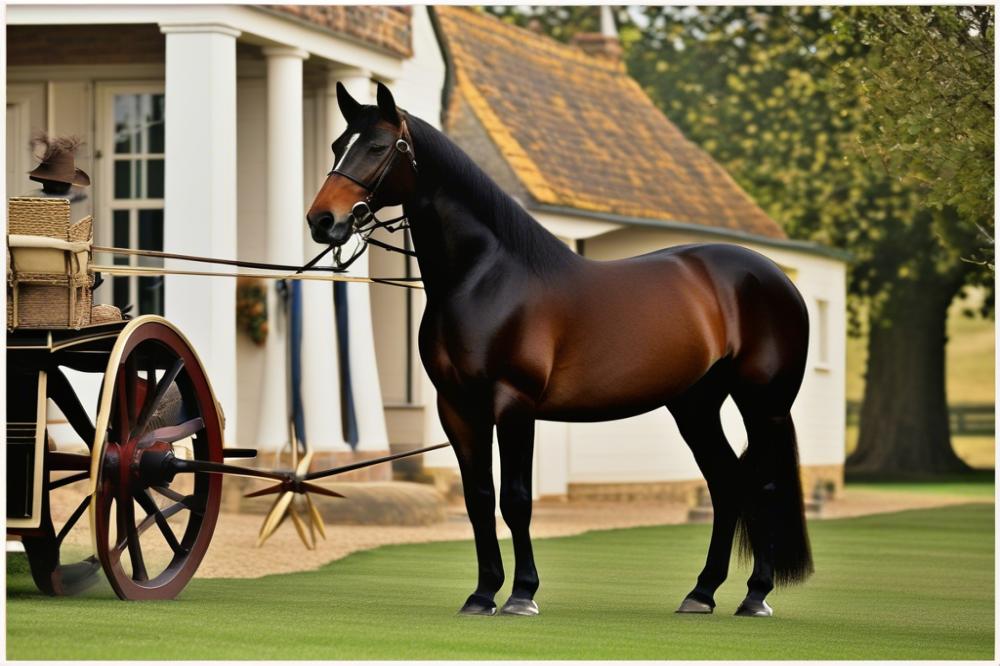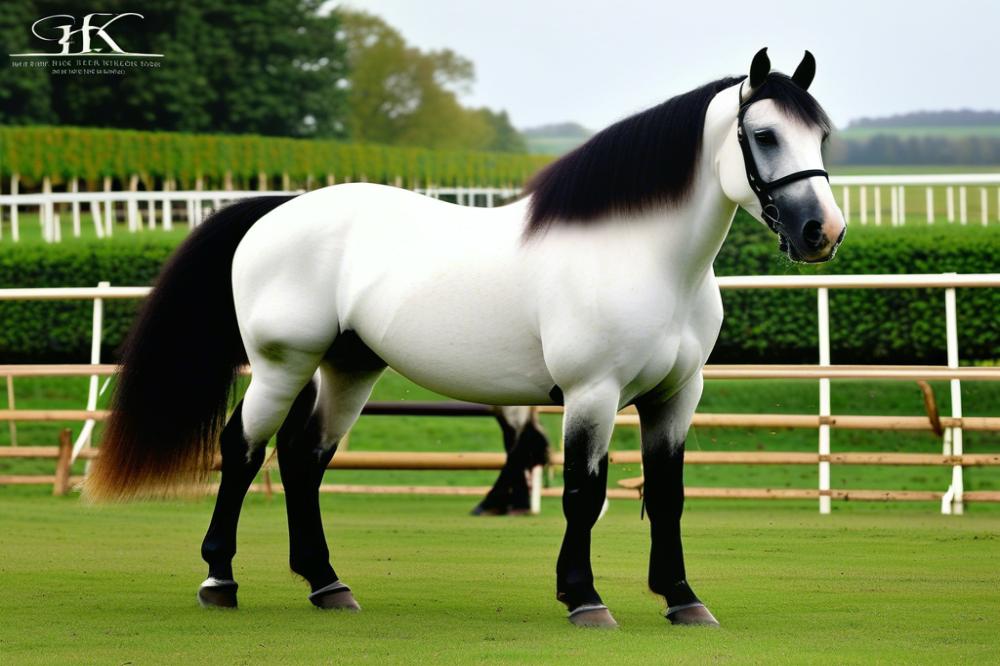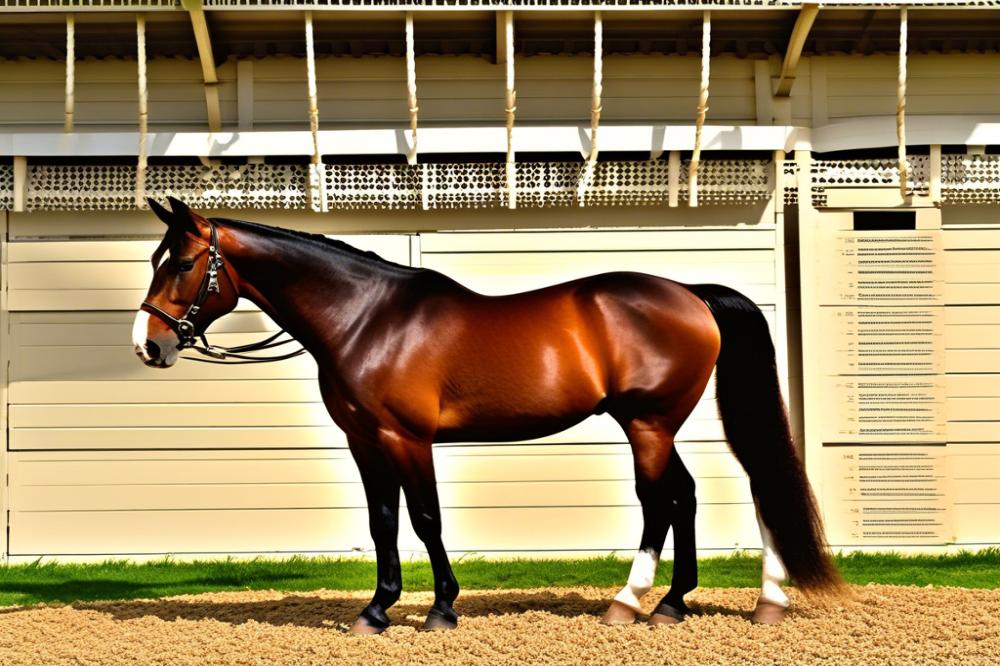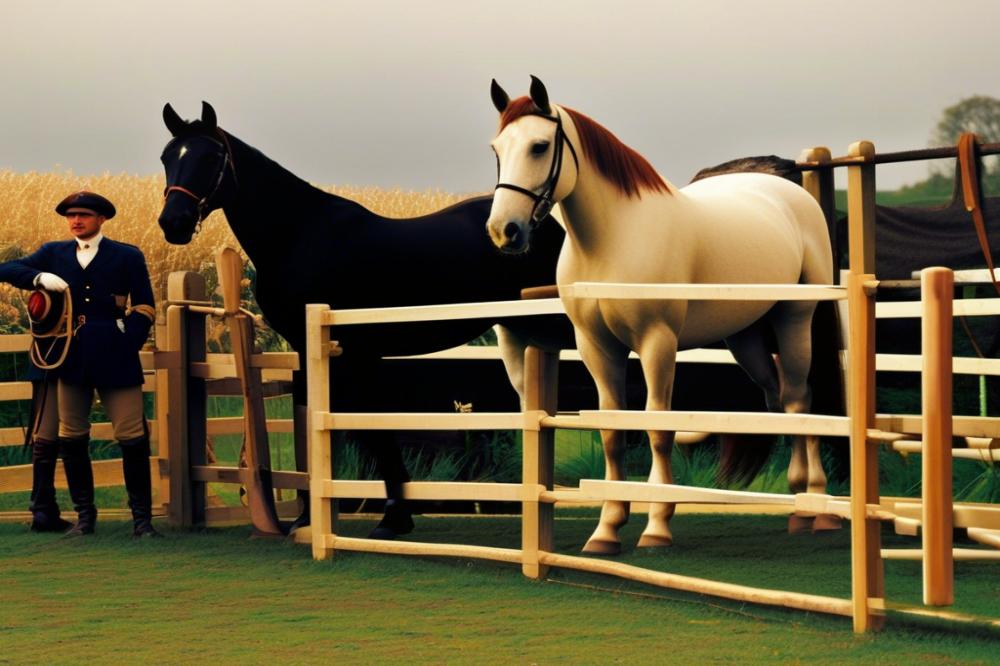Understanding the Role of War Horses in History
Throughout history, horses have held a special place in our hearts and on the battlefield. These majestic creatures have served as crucial companions for soldiers, embodying strength, loyalty, and bravery. Did you know that many famous battles have been won or lost, not just because of the strategies employed, but also due to the remarkable horses that carried the warriors into combat? The relationship between humans and horses during wartime is a tale of trust and partnership that goes back thousands of years.
What Exactly Are War Horse Breeds?

When we talk about war horses, we refer to specific breeds that possess equine characteristics suitable for the rigors of battle. These traits often include great stamina, agility, and the ability to maintain composure under pressure. Historical breeds such as the Andalusian or the Arabian were often preferred for their strength and endurance. Most people don’t realize how much care and training these horses needed to become exceptional mounts in times of war. Horse care played a vital role in keeping these animals healthy and ready for action.
Paving the Way for This Article

This article intends to explore the fascinating history behind war horse breeds and their unique traits. As you read on, you’ll discover valuable horse breed information and learn how these animals impacted military tactics and outcomes. Just like human soldiers, each horse had its own personality, quirks, and sometimes, a love for treats—ever wonder if can horses eat marshmallows? The answer might surprise you!
By diving into the world of historical horse breeds, we’ll uncover stories that highlight not only their strength and prowess but also the softer, endearing side of these equine warriors. Get ready for a thrilling ride through time where we’ll also offer a blanket guide for horses that will help you understand how best to care for these incredible companions, whether in battle or everyday life. So, hold on tight; the journey is about to begin!
Historical Context

Early Use of Horses in Warfare
Before tanks and airplanes became the stars of the battlefield, horses played a crucial role in warfare. Ancient armies relied on these majestic creatures for mobility. Picture a battlefield filled with soldiers charging on horseback. It was something to behold! Grabbing a spear or bow while riding wasn’t an easy task, but warriors had to learn quickly. This connection to horses began thousands of years ago. In fact, the earliest records show that chariots pulled by horses appeared around 2000 BCE in regions like Mesopotamia. Those early users understood that speed and strength were vital in combat.
Evolution of Horse Breeds for Military Purposes
Through the ages, different conflicts shaped various horse breeds. As battles raged on, the need for specialized steeds became clear. People started to select for traits that made horses exceptional in combat. Bigger and stronger horses were desired for carrying heavy armor. The Thoroughbred emerged, known for its agility and speed. Meanwhile, heavier breeds like the Percheron became popular for knights in armor. Genetic selection played a big role at this stage. It wasn’t just about breeding; it was about survival.
Impact of Warfare on Horse Breeding Practices
The chaos of war often changed how people cared for and bred horses. During tough times, good horse care was hard to maintain. Quality often took a back seat to quantity. Breeders sometimes used whatever horses they had, crossing them even when they weren’t the best choices. Historical breeds began to mix together in unexpected ways. Over time, these experiences shaped the traits and characteristics we now associate with war horses.
Every time a new army marched into battle, there was a chance that horse breed information would shift drastically. You might say wartime innovation often produced remarkable yet eccentric results. Adult horses were sometimes trained quickly for battle, leading to dedicated warriors but also some unhappy steeds. Those archers shooting from horseback? They didn’t always land a bullseye!
As the smoke from the battlefield settled, new breeds emerged, ready to serve. The effects of war on breeding practices are still felt today. Each horse breed carries a piece of this rich history with them. So when you see a horse, remember that behind those eyes lies a story of courage, challenges, and changes through time.
Key War Horse Breeds
Overview of Prominent Horse Breeds
Countless horse breeds have made their mark in history, particularly on battlefields. These equine warriors were more than just transportation; they were partners in conflict. Understanding their backgrounds helps us appreciate their roles. Horses have been crucial in many wars throughout the ages. Each breed brings its own set of traits and stories to the table.
Descriptions of Each Breed’s Characteristics
The Percheron horse breed deserves first mention. Known for their size and strength, these horses often stood taller than most. These powerful animals hail from France and were originally bred for heavy draft work. During wars, they excelled in pulling artillery and supply wagons.
Next up, the Arabian horse shines brightly in history. With its endurance and intelligence, this breed has long fascinated breeders and historians alike. Arabians were versatile, serving as mounts for both knights and foot soldiers. Their elegant build and spirited nature make them easily recognizable.
Another noteworthy breed is the Thoroughbred. This breed is not just about speed on racing tracks. In military settings, Thoroughbreds provided swift cavalry mounts. Their exceptional athleticism and keen instincts helped soldiers move quickly during battles.
The Clydesdale is another important historical breed. Their massive size sets them apart. Often associated with pulling heavy loads, these gentle giants were once key in transporting troops and supplies. Their calm demeanor made them reliable companions amid chaos.
Finally, the Friesian horse stands out for its striking appearance. With a beautiful black coat and flowing mane, Friesians were more than just looks. They served proudly in various European conflicts, known for their agility and grace.
Historical Importance and Roles in Various Conflicts
Horse breeds played vital roles in many notable conflicts throughout history. The American Civil War saw the importance of trusty steeds like the Thoroughbred and Morgan. Cavalry units relied on their speed and endurance, crucial elements in battle strategies.
During World War I, the use of horses saw a decline with the rise of machinery. Nevertheless, many breeds, including the Clydesdale and Percheron, remained integral for logistical tasks. They transported troops and supplies, proving that even in mechanized warfare, these horses were invaluable.
In ancient times, the Arabian horse was revered on battlefields. Their loyalty and bravery earned them a spot alongside fearsome warriors. Tackling harsh terrain with ease, they were essential in the deserts of the Middle East.
Alongside these breeds, many others played supporting roles in warfare. From the steppes of Mongolia to the fields of Europe, soldiers and horses shared rich narratives. Understanding each horse’s contributions helps paint a vivid picture of history itself.
With so many horse breeds intertwined in human conflict, we see threads of bravery and partnership. These equine companions deserve recognition for their service and sacrifice, just as much as the soldiers they supported.
Training and Tactics
Methods of Training War Horses
Training war horses was no walk in the park. Trainers and soldiers performed lots of tasks to prepare these animals for battle. First, the basics of horse care were crucial. This meant grooming, feeding, and observing their behavior. Building a bond with the horse was necessary for effective training. A strong relationship made for better cooperation.
Specific equine characteristics needed attention during training. For instance, focusing on a horse’s temperament helped in determining the best methods. Some horses thrived on rewards, while others responded better to a firmer hand. Gradually exposing them to the sounds of battle, like drums and shouting, readied them for the chaos ahead.
Another important aspect was desensitization to weapons. Trainers often clanged swords or shot blanks near the horses, making sure they wouldn’t panic. It might sound harsh, but it was about survival. Imagine a horse taking off when arrows flew! In the end, training required patience. Horses learned at their own pace, much like kids in school.
Tactics Employed with War Horses in Battle
Tactics used in battle were fascinating. Cavalry played a major role in many historical conflicts. Soldiers on horseback charged at enemy lines, creating fear. The sight of a looming horse charging forward was enough to rattle many foes.
Some ancient civilizations even developed formations. The wedge formation was popular. This allowed troops to penetrate enemy ranks. Horses were trained to stay close together, so they wouldn’t get separated. It was a bit like a tightly knit family sticking together in tough times.
At times, cavalry would feint a retreat. This trick drew enemies into a trap. Once the enemy was lured, cavalry would turn and attack. Humorously, it was like playing chess with living pieces! Flexibility was key, as situations changed quickly.
Evolution of Cavalry Tactics Over Time
Over centuries, cavalry tactics evolved significantly. In the early days, soldiers relied heavily on brute strength. They charged head-on, hoping to overwhelm forces through sheer numbers. However, as wars became more complex, so did strategies.
Gunpowder introduced new challenges and opportunities. Cavalry had to learn to work in tandem with infantry units. Suddenly, it wasn’t just about horse breed information; it was about utilizing different strengths. Warhorse traits suited for combat changed, emphasizing characteristics like speed and resistance to gunfire.
By the time of the Napoleonic Wars, cavalry became more specialized. Light cavalry was used for scouting and skirmishing. Heavy cavalry, on the other hand, delivered devastating charges. Strategies now included flanking maneuvers and rapid retreats. These shifts in tactics led to victories and losses that transformed battlefields.
As technology advanced, the roles of cavalry continued to shift. Armored vehicles and artillery changed the game. In modern warfare, the role of horses diminished. Yet, their legacy in shaping tactics remains undeniable. The equestrian skills honed over centuries paved the way for future military strategies, even if horses aren’t the main players anymore.
Cultural Significance
Symbolism of War Horses in Literature and Art
Throughout history, war horses have held a special place in literature and art. They symbolize strength and loyalty. Think about famous tales: in “The Iliad,” Achilles rides into battle on his trusty steed. This horse wasn’t just a means of transportation; it embodied bravery. Artists often painted majestic figures to capture the bond between horse and rider. The noble creature isn’t merely a background character; it plays a crucial role in the story. In many cultures, horses represent a connection between humans and the divine. Their spirit inspires courage, leading makeshift knight-errants to venture into epic quests.
War Horses in Different Cultures and Societies
Various societies have revered their war horses. Take the Mongol Empire, for example. Their Ponies, small yet sturdy, helped conquer vast lands. The Bedouin tribes also valued horses. They saw these animals as a symbol of pride and prestige. Meanwhile, in ancient Rome, horses were central to military strategies. Soldiers relied on different horse breeds to charge into battle. From the swift Andalusian to the mighty Clydesdale, each breed brought unique equine characteristics. In versatile situations, these horses adapted. Their role varied according to the culture, sometimes even serving in ceremonies.
Modern Perceptions of War Horses
Today, our understanding of war horses has transformed. Many people see them more as companions than warriors. Today’s horse enthusiasts often focus on horse care and training. The heroic tales remain, but horse breed information highlights their different abilities. Parents tell children stories of gallant steeds, but often, these horses are now seen more as stars in movies and books than as battle companions. Some folks feel nostalgia when they think of those historical breeds. They remember images of glorious charges and brave knights. However, most understand that today, these animals can bring joy and companionship without the harsh realities of war. Each horse has its own special traits that shine in the arenas and fields of contemporary life.
Decline of War Horses in Modern Warfare
The evolution of warfare has transformed how battles are fought. As armies moved away from cavalry, the role of horses diminished significantly. The development of tanks and planes left many traditional horse breeds in the dust, so to speak. Soldiers began to rely more on machines than on the strength and agility of horses. This change shifted the focus from the majestic war horses of the past to the engines of modern warfare.
The Transition from Cavalry to Mechanized Warfare
Once upon a time, horses were the backbone of armies. They charged into battles, carrying warriors into the fray. Over time, new technologies emerged, changing the landscape of combat. Canons and later, airplanes, began to take the place of these noble steeds. Thus, the cavalry cavalry units became less common and eventually disappeared. Horse breeds that had served valiantly for generations found themselves out of work, and quite suddenly. It was as if the curtains fell on a grand play, leaving behind echoes of hoofbeats in dusty memory.
Impact on War Horse Breeds
The decline of cavalry not only shifted tactics but also affected horse breed information. Breeders began focusing on traits that supported agriculture or other uses. As a result, many historical breeds faced the threat of extinction. Unique characteristics that made these horses exceptional in battle were no longer prioritized. Consequently, some traits, once esteemed, faded away as fewer horses were bred for their war capabilities.
Conservation of Traditional War Horse Breeds
Even with the shift in warfare, efforts to conserve traditional breeds continue. Groups passionate about preserving equine characteristics work tirelessly to maintain these breeds. They often organize events and shows to celebrate historical horses. Horse care programs have also emerged, aimed at keeping these breeds healthy. It’s a bit like giving a second chance to an old song that still carries deep meaning. The nostalgic echoes of war horses remind us not just of battles fought, but of lives lived in partnership with humans.
In some places, you’ll find breed registries dedicated to keeping these unique horses alive. Breeders share their best practices, ensuring that the legacy continues. With the right care, these magnificent animals may grace the fields long after the last battle has faded into history. The heartbeat of these horses still resonates, and their stories live on. Helping to maintain historical breeds is essential, not just for the horses, but for our understanding of human history too.
Current Status of War Horse Breeds
Overview of Existing Breeds Used in Ceremonial or Recreational Contexts
Many horse breeds today carry the legacy of their noble ancestors. Breeds like the Clydesdale and Percheron still strut their stuff in parades and ceremonial events. These gentle giants impress crowds with their size and grace. Other breeds, such as the Andalusian and Thoroughbred, take part in various recreational activities. Riding schools often use these horses in lessons due to their calm demeanor and intelligence.
Some breeds, with their unique equine characteristics, provide the look and feel of historical times. For instance, the Shire horse, which once trotted alongside soldiers, is now found in shows and festivals. People love seeing these magnificent animals up close, and some even dress them in traditional gear for reenactments. Each horse has a story to tell, and they keep that history alive.
Programs Aimed at Preserving Heritage Breeds
Organizations frequently work hard to preserve historical breeds. Programs are designed to promote horse care and responsible ownership. This is crucial, especially as some breeds become less common. Breeders and enthusiasts often come together in clubs or associations dedicated to keeping these traits alive. They share horse breed information and tips about training or showing.
Moreover, some farms host educational events. Visitors can learn about the importance of these breeds while getting a hands-on experience. For many, seeing these horses in action is a reminder of the past. Preserving this heritage allows future generations to appreciate what these animals once meant to society.
Role of War Horses in Contemporary Equestrian Events
War horses once charged into battle, but today, they find new roles. Many participate in dressage, jumping, and other equestrian competitions. Spectators admire the elegance of these events and often marvel at the horses’ skills. Trainers focus on the traits that make these animals special, blending history with modern techniques.
You might even spot a war horse in a movie set, where they bring scripts to life in historically inspired films. In addition, some communities organize events where these horses demonstrate their agility and strength. Riding enthusiasts enjoy watching as riders navigate intricate courses. Friends and families often cheer from the sidelines, caught up in the excitement.
Overall, the history of these exceptional horses continues to enrich our equestrian culture today.
A Last Look at War Horse Breeds and Their Legacy
As we wrap up our journey through the fascinating history of war horse breeds, it’s clear these noble creatures have played a vital role in many societies. From the sturdy Clydesdales in battles to lighter steeds that dart across the fields, each horse has a story etched into the annals of time. These animals were not mere transport; they were partners in courage, sharing the heat of battle and the weight of history. They may not wear capes like superheroes in horse family movies, but they certainly exemplify bravery and loyalty.
Reflecting on their legacy, we see how these horses have shaped military tactics and influenced cultures. Consider the bond between a soldier and their horse—a connection that goes beyond words. This relationship reminds us how history is not just about people; it’s also about the animals that stood alongside them. As technology advances and war changes, the role of these magnificent beasts has evolved, yet their spirit endures. They once charged into conflict but now stand as symbols of valor, often reduced to stories told around a campfire.
Looking toward the future, we must embrace the importance of preserving these remarkable breeds. Awareness is crucial now more than ever. So how does horse sit in our current world? Well, we need to champion their uniqueness, just as we do with the diverse threads of history itself. Let’s not overlook their significance. After all, nurturing their existence contributes to the rich tapestry of our heritage.
Ultimately, appreciating and preserving war horse breeds is something we can all participate in. Supporting breeding programs or visiting historical reenactments can make a difference. Let’s celebrate these extraordinary animals. Remember, they may not carry soldiers into battle any longer, but their hearts and histories deserve recognition and care. Together, we can ensure their legacy gallops on for generations to come.



